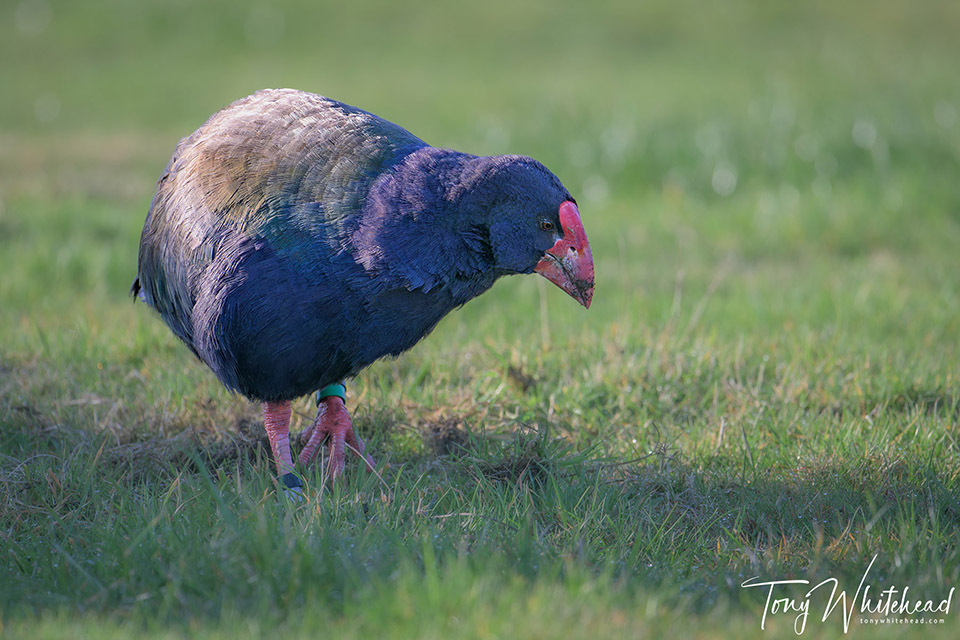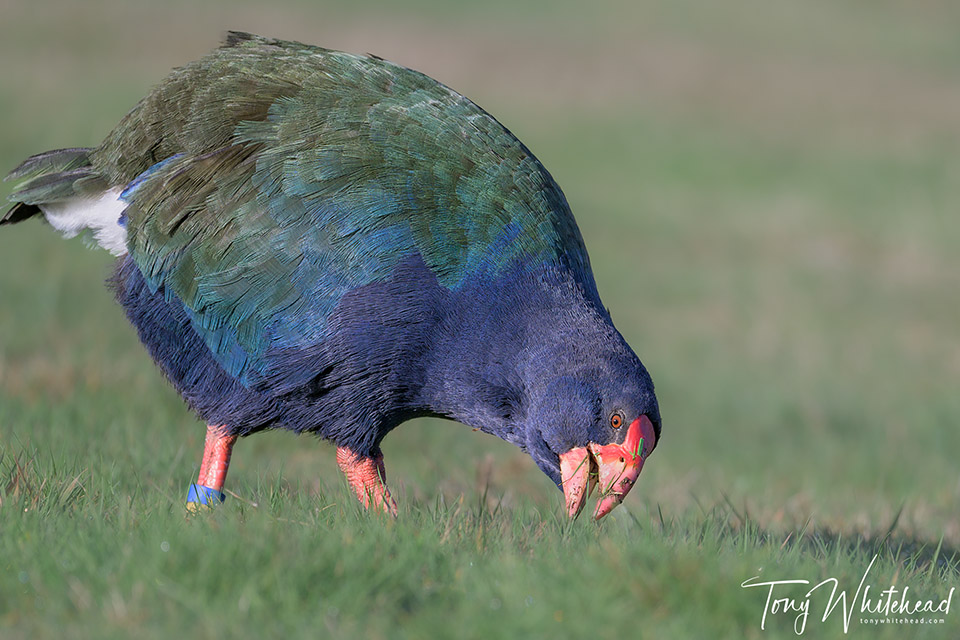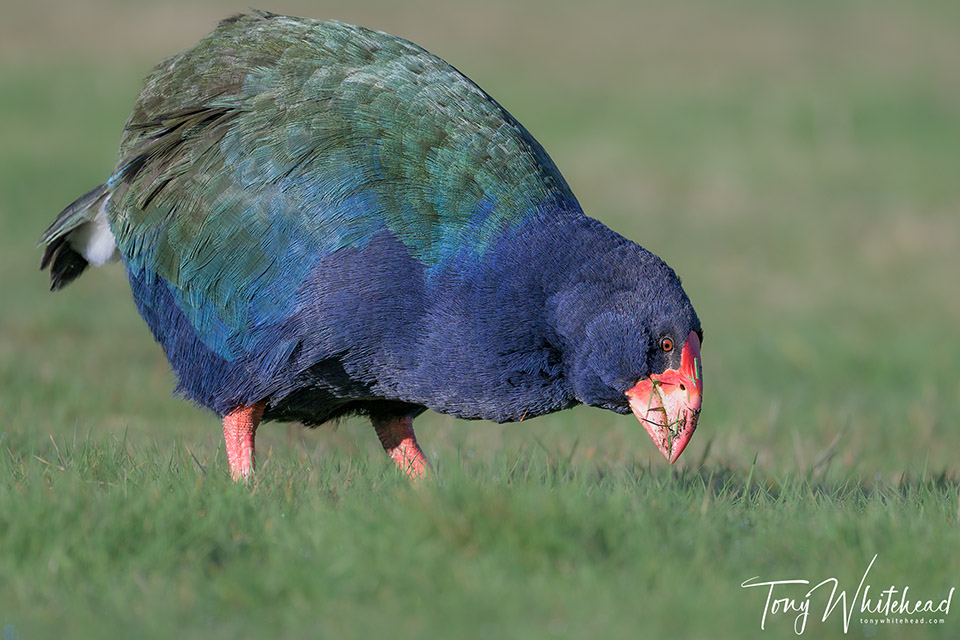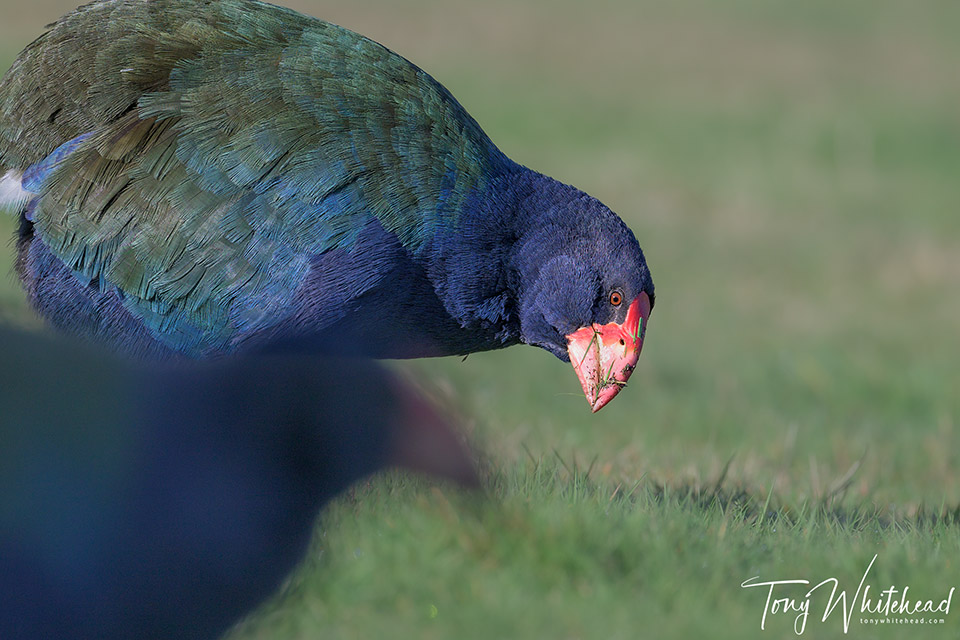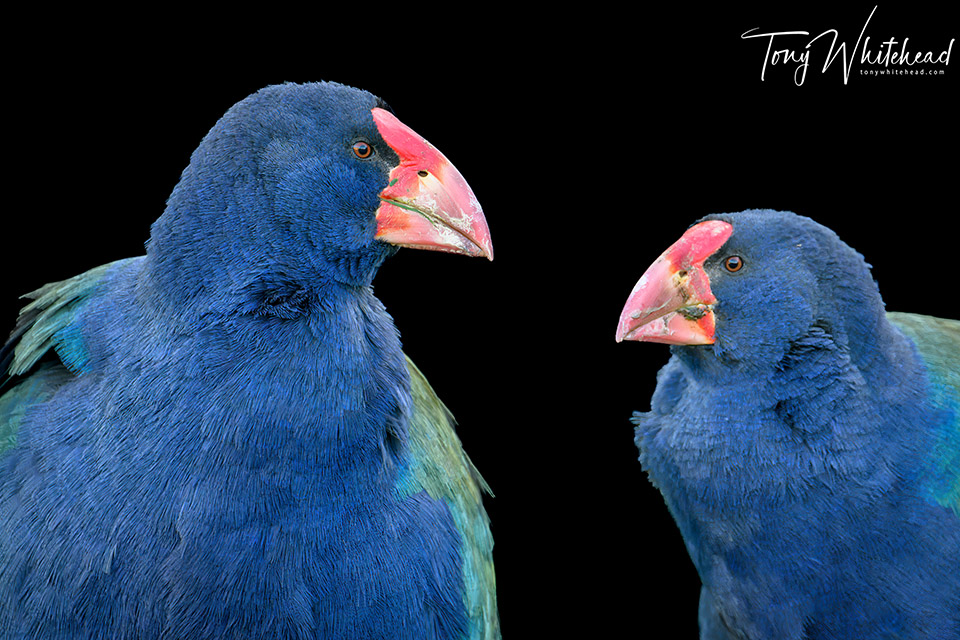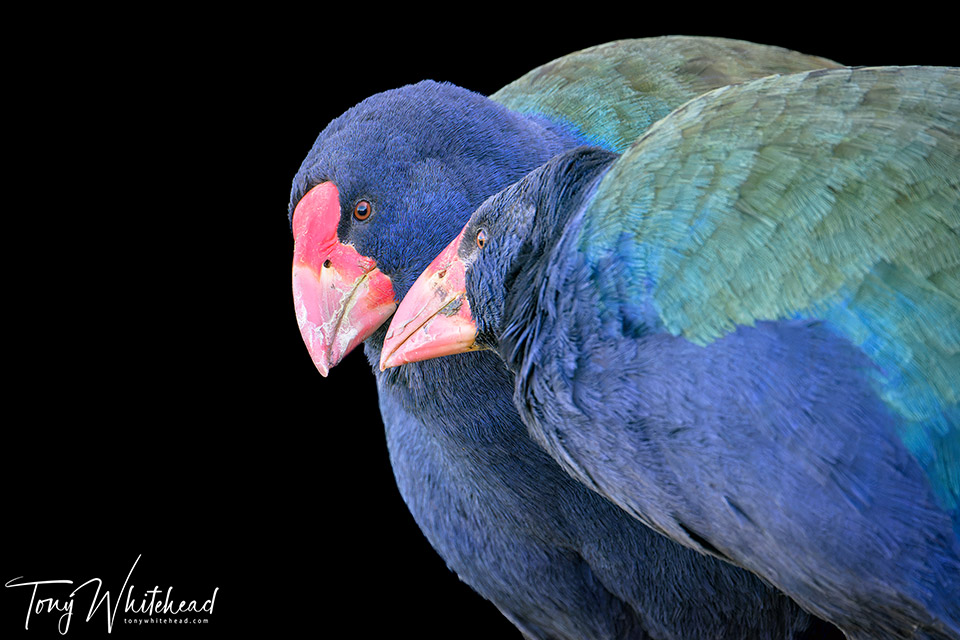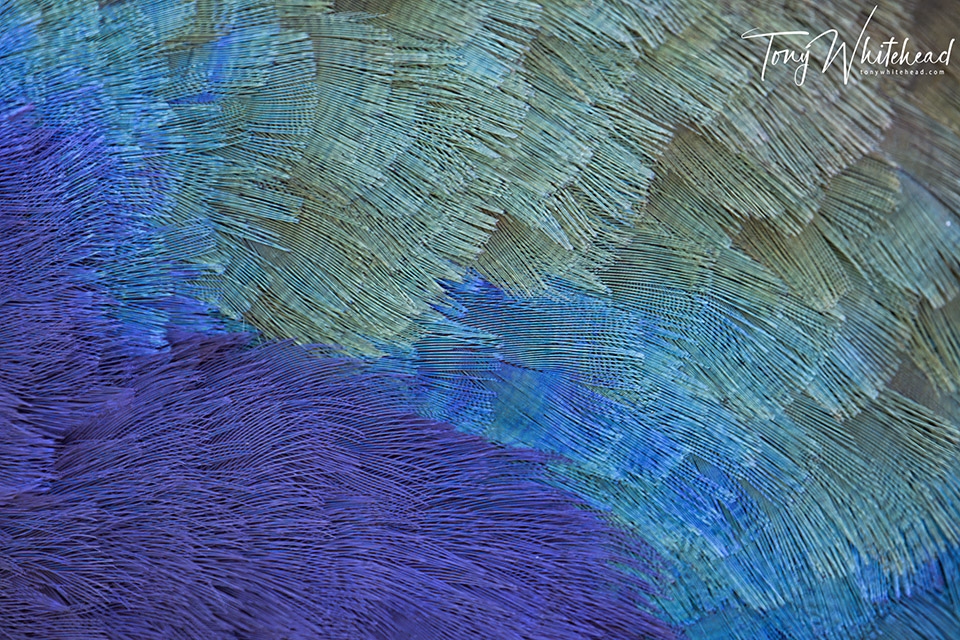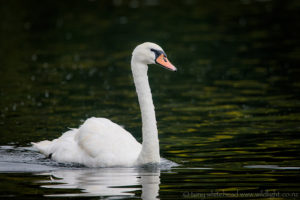I find bands very distracting in bird images. While recognising their importance for science I prefer to exclude them in my images if I can and have written on this before in Penguin Flipper Band – Digital Surgery. In that post I spoke about choosing poses that concealed the band and using digital surgery as another option. I find the bands really draw my eye in an image so my preference is to conceal the them at time of capture if possible.
A trip to Orokonui gave us opportunities to photograph Takahē again. On this occasion we encountered them almost immediately and they were out in the sun grazing on the grass. By adopting a low shooting position and waiting for them to move into slightly longer grass the bands were successfully concealed.
This was a simple solution in this situation but most birds are arboreal with little grass available for band concealment. Being aware of the bands is the first step in concealing them naturally. Choosing the best poses to conceal the bands before triggering the shutter is another thing to add along with looking for background distractions and eye highlights. Being consciously aware of them is the first step and if successfully implemented can save a lot of time.
Including out of focus foreground elements can be a useful strategy. Often this will be vegetation but on this occasion the partner bird moved through the frame and was a very useful element to create echoing shapes and depth as well as concealing bands.
The next step is some drastic pruning/cropping to eliminate the entire leg and band. Takahē are such dramatic, colourful, textural birds that this can be a useful approach.
Cropping in tighter to focus on feather textures/colours completely removes the bands from consideration. Next week I will share some Kaka examples with some digital surgery techniques.
Photos with Nikon Z9 and Nikkor Z 400mm f4.5 VR S
